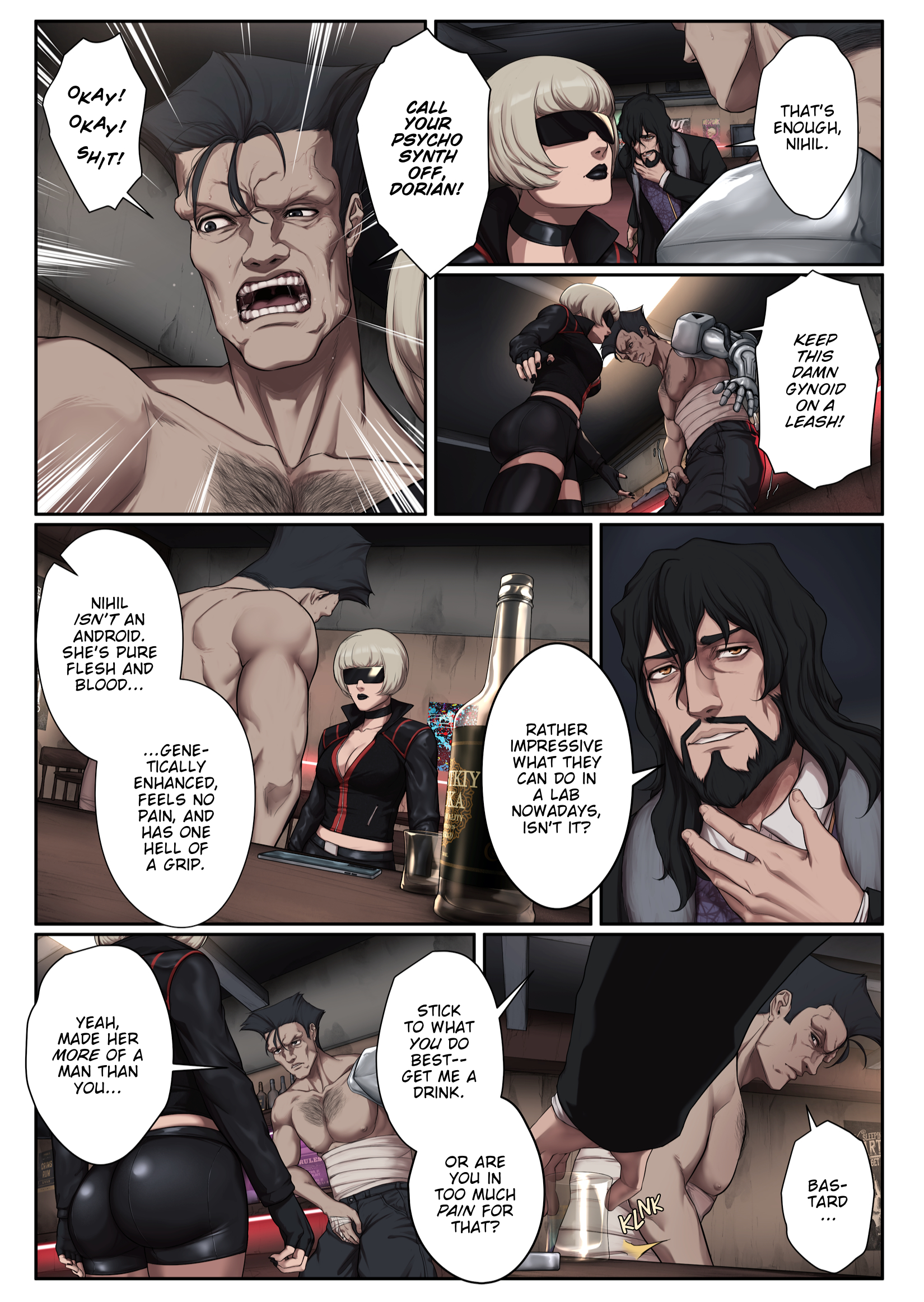Chapter 25, Page 13
The following is an article from Science Today, a quarterly publication dedicated to exploring popular science, technology, and cutting-edge innovations. [Article originally published three years ago.]
REDESIGNING HUMANITY:
THE ETHICS OF GENETIC ENGINEERING
By Sander Harkin
Genetic engineering has become a topic of fierce debate, with many examining its applications as a dual-use dilemma—an ethical principle in which technology can be used for both beneficial and harmful purposes.
Modifying human genes can undoubtedly enhance and improve human life. At present, Class 1 and Class 2 genetic modification fall under “gene therapy,” which allows for medical treatment, curing/preventing diseases, correcting birth defects, and a wide range of related uses.
Class 3 genetic manipulation involves more radical examples of human enhancement. This can include altering an individual’s appearance, metabolism, physical capabilities, and mental faculties such as memory or intelligence. “Gene doping” is also considered Class 3 (ie improving athlete performance in sporting events).
There has been increasing issues of legality regarding Class 3 gene modification, along with potential moral/ethical concerns. Numerous countries have passed laws to prevent Class 3 human enhancements—however, these laws fail to encompass the entire scope of Class 3 augmentation. The distinction between therapy and enhancement has been open to debate, and certain enhancements may be done under the guise of therapy. For instance, athletes might receive gene therapy mods to better treat “fatigue” or “exhaustion” which, in turn, may enhance their athletic performance—ultimately giving them an unfair advantage against non-modded competitors.
And then there’s the matter of black markets, which exists outside of the legal spectrum entirely. As genetic technologies advance, genome editing has become faster, cheaper and more efficient. This has given rise to a booming underground market for illegal human modification, where “gene manipulators” will offer biological augments for a price, no ethical concerns attached.
Even governments known to publicly decry Class 3 genetic enhancement have been caught developing methods to augment their soldiers. Military applications are nearly endless—imagine soldiers who are more emotionally resilient and less prone to post-traumatic stress syndrome. Taken to extremes, governments could even produce “efficient killing machines” with an altered capacity for emotion. Private military contractors, some already operating in legal grey areas, could start enhancing their employees with genetic augments to include near-superhuman strength, greater endurance, and superior cognitive function.
A recent study, leaked from the Marabian government, reveals trials of gene-enhancement involving human resistance to acute radiation syndrome, thereby increasing a soldiers’ ability to survive nuclear fallout. Other known bio-enhancements include providing greater resilience to frostbite, reducing stress levels, alleviating sleep deprivation, and reducing or entirely eliminating pain.
Certain groups, such as the Council for Human Welfare, have pushed for far stricter laws on all forms of gene technology. Their worries range from a fear of eugenics-like discrimination, social stratification, unregulated biological manipulation, and the risk of unforeseen consequences resulting from changes to the human genome.
With current laws, few actual cases of Class 3 genetic engineering have been brought to court or successfully prosecuted. Illegal underground practices and black market operations are estimated to be growing yearly, with “mod shops” now found in every major city—some even openly advertising their services.
Ethical questions regarding gene technology now play a significant role in political and public discourse, and will likely become more prominent, particularly at the intersection of gene manipulation and military application.
For better or worse, all aspects of genetic engineering are here to stay—what this means for the future of humanity remains to be seen.
Danger Zone One. Story by Midnight. Art by Salaiix.






















Really hoping we get a Nihil vs Madison scene. Also, great write-up! I always appreciate and enjoy all the extra lore this comic has.
This write-up reminds me that beyond the gratuitous explicit stuff (that could be toned down–compare/contrast Cyberpunk Edgerunners), there’s some phenomenal writing here.
Also with regard to gene modification: is that even remotely scientifically plausible to just modify a flesh and blood adult to genetically modify them after the fact and alter their bodies like that? I ask because Jennifer Doudna’s working on that with CRISPR (also, she has DNA right in her name, heh!), but not for the purpose of genetically engineering human beings to just be better.
That said, I am extremely pro genetic engineering, because, well, humans are already a bunch of eugenicists. Every time someone swipes left on a dating app for someone being a bit too ugly? Yeah, that’s judging someone on genetics. So might as well acknowledge that and let people give their kids opportunities they themselves didn’t b/c their parents made a mistake in marriage.
In any case, I hope once this current arc is over, we might get some exploration of these seedy gene modifying labs and such, and go into some cyberpunk/horror hybrid stuff. On one hand, Madison fanservice is generally welcome. OTOH, she just might be nursing some PTSD after this if she doesn’t just power through it with her usual “too angry to be bogged down” attitude.
Keep up the great writing, Midnight.
And by Jennifer Doudna’s work, I mean she’s working on that stuff with regards to fetuses in the womb, not flesh and blood adults!
I imagine Madison is genetically modified when she was a soldier. It would explain her ability to take such punishment and still operate pretty well.
She quickly put Wilkos in his place!
How durable are Nihil’s bones?
I would expect them to be reinforced or she would most likely not have been able to crush a billiard ball in her bare hand without some serious damage. Billiard balls are very solid.
Damn.